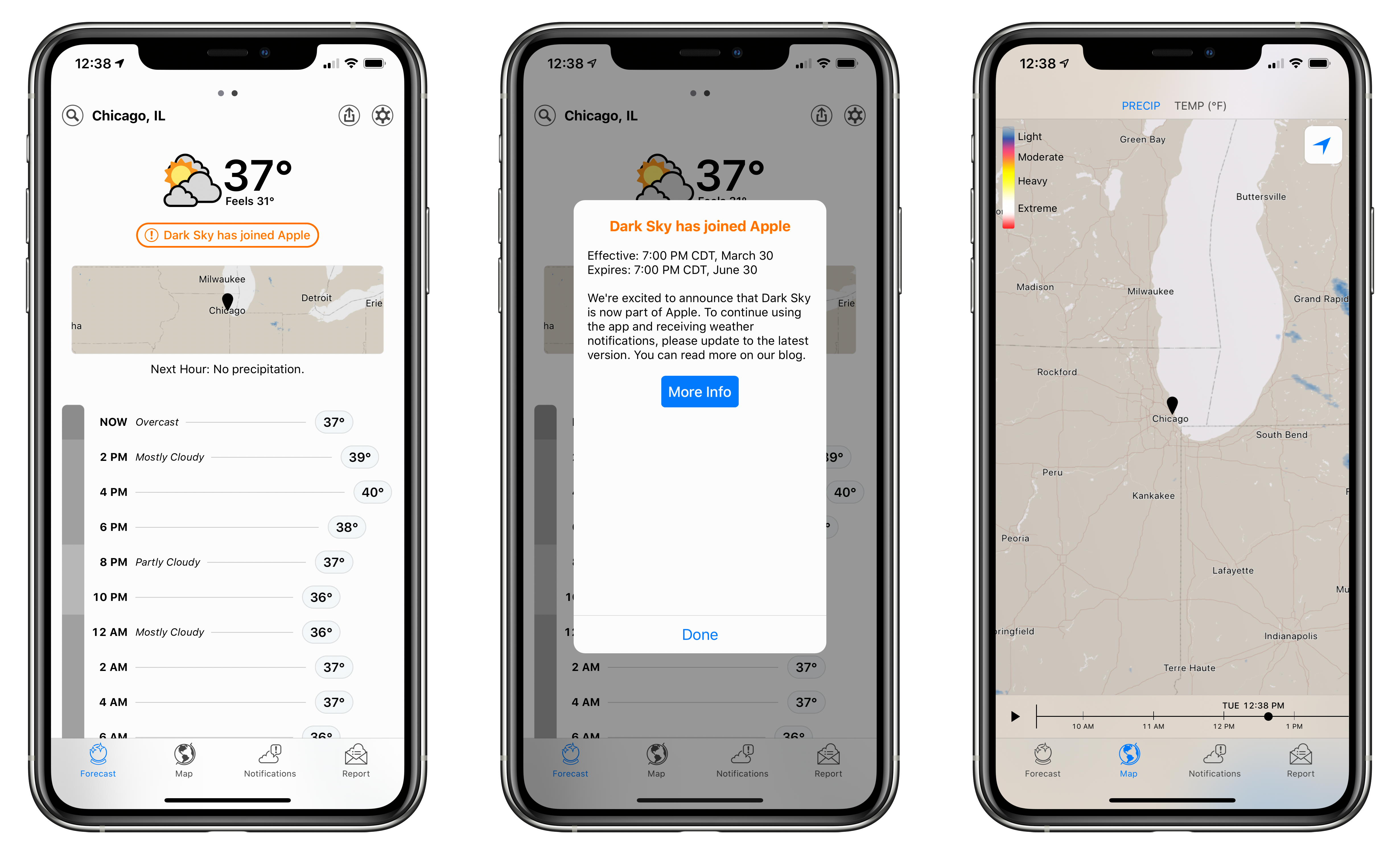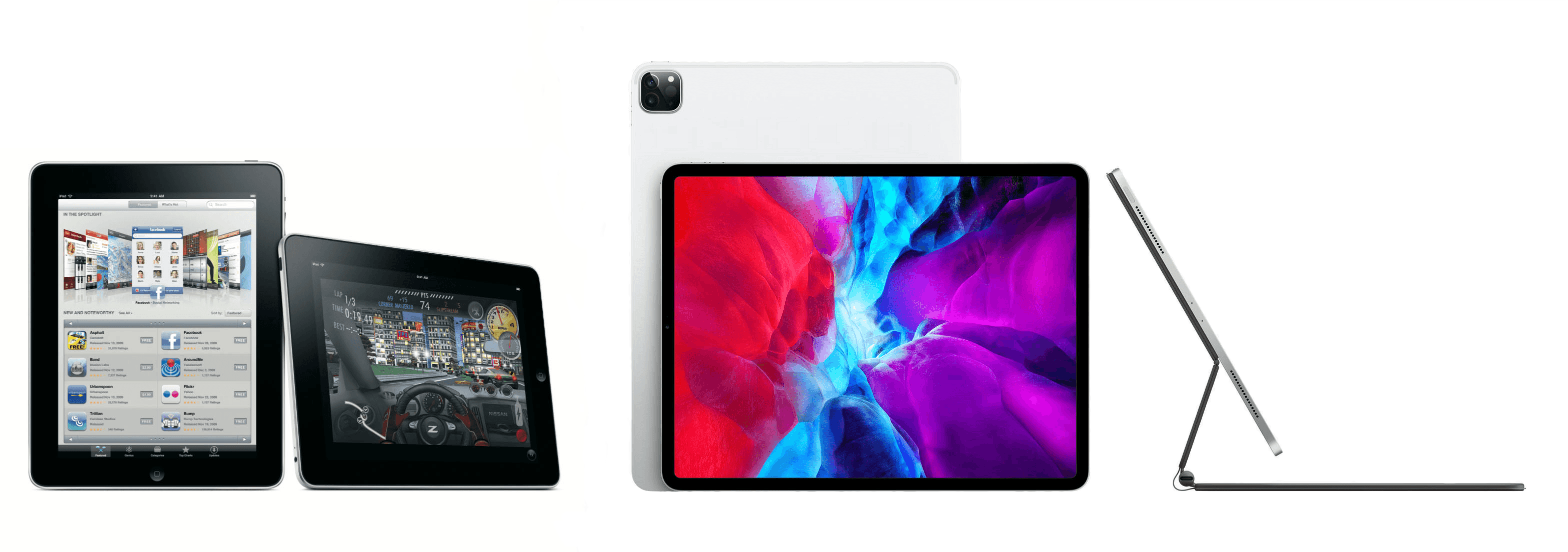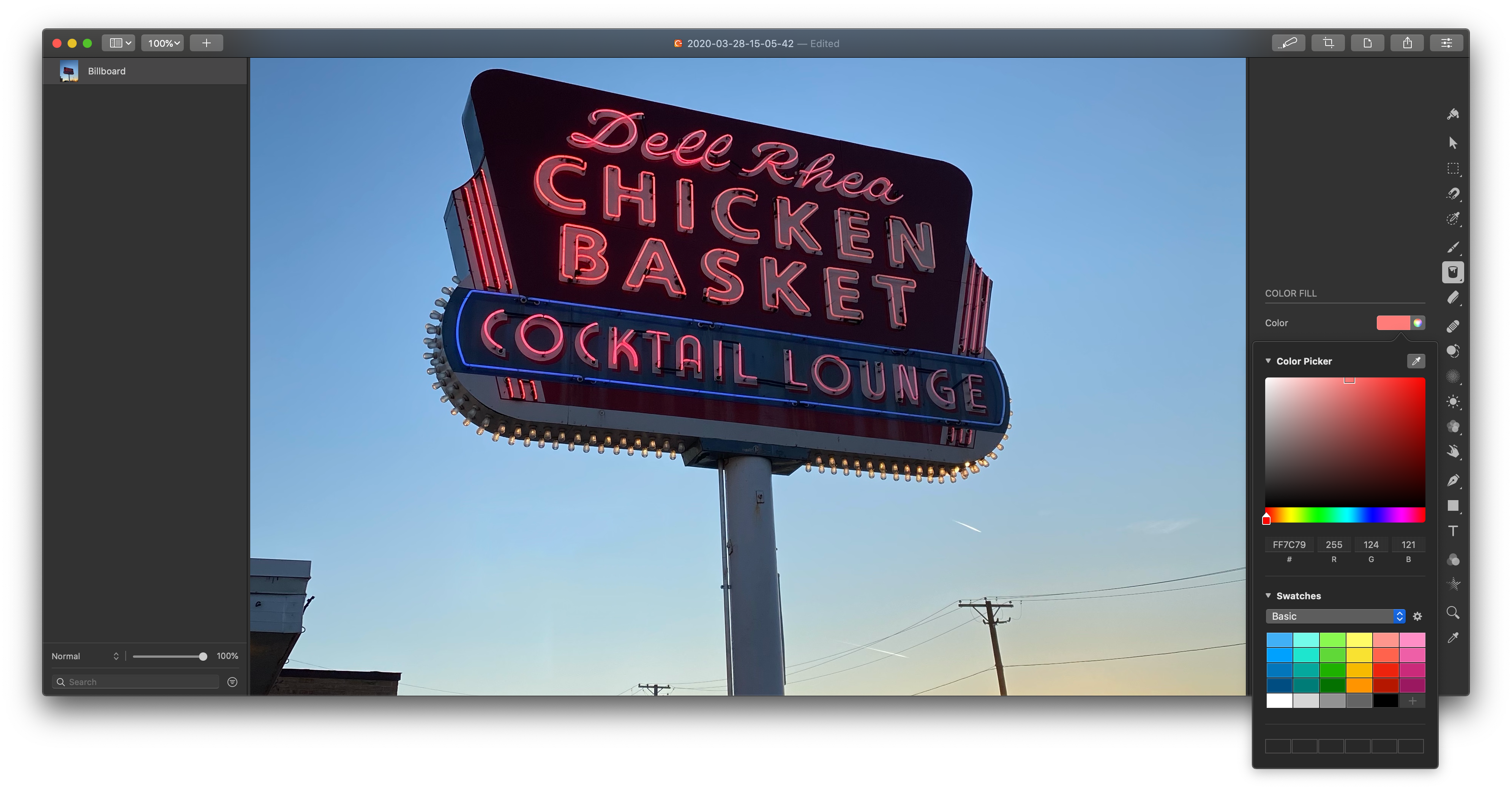Apple has released noteworthy updates for its iWork suite of Pages, Numbers, and Keynote, alongside a new version of iMovie, all of which have as their hallmark feature mouse and trackpad support on iPadOS. There are a variety of other nice changes too, big and small, that make these apps more powerful than ever across all platforms.
Apple Updates iWork Suite and iMovie with Trackpad Support on iPad and Much More
Exploring the Most Impactful iPad Apps of the Decade
John: It’s hard to understate the importance of the iPad’s large screen. Early critics dismissed the device as a big iPhone, but that criticism revealed a fundamental misunderstanding of the product.
By jumping from the iPhone’s small 3.5-inch display to one that approached 10 inches, the iPad delivered a canvas that allowed Apple and third-party developers to rethink not just the concept of mobile apps, but of apps altogether. The additional screen real estate allowed developers to flatten and spread UIs in a way that made new uses possible. That, in turn, led to richer, deeper experiences for everything from reading a comic book to managing complex projects and automating repetitive tasks, allowing users to interact directly with the software beneath their fingers.
After years of using the very best apps developers have to offer on the iPad, it was remarkably easy for Federico, Ryan, and I to come up with a list of the iPad apps that have been the most impactful for us during the past decade. There’s a lot of factors at play in arriving at these apps. Some forged a path by adopting the latest Apple technologies in a unique way that set an example for apps that followed. Others are apps that define a category that takes unique advantage of the iPad’s hardware. These are also apps that work on the iPhone or Mac too, but are most at home on the iPad’s unique platform.
Although there is no single formula for which iPad apps have been the most impactful, one thing each app in this collection shares is a rich, personal experience. These are apps inspired by and reflected in the image of Steve Jobs sitting onstage in a comfortable black leather chair swiping through photos. The iPad and the apps that run on it have come a long way since then, but the intimacy of directly manipulating apps that transform a slab of glass into anything a developer can imagine hasn’t changed, and remains what makes the iPad so special.
Dark Sky Has Been Acquired by Apple and Its API Will Be Discontinued at the End of 2021
Dark Sky, the maker of the popular weather app by the same name, announced on its blog (and in its iOS app) that it has joined Apple.
In its post, the company said:
Our goal has always been to provide the world with the best weather information possible, to help as many people as we can stay dry and safe, and to do so in a way that respects your privacy.
There is no better place to accomplish these goals than at Apple. We’re thrilled to have the opportunity to reach far more people, with far more impact, than we ever could alone.
According to the company, its iOS app will continue to be made available on the App Store. However, the Android and Wear OS apps will be discontinued and the service will no longer work after July 1, 2020. Subscribers active at that time will receive a refund. Likewise, the weather forecast, maps, and embeds portions of the Dark Sky website will be discontinued after July 1, 2020.
Dark Sky is also the maker of an API that is used by many, many third-party weather apps. Dark Sky says it is no longer accepting sign-ups for the API and that it will be discontinued at the end of 2021. Although that’s a long way off, the change is going to impact many users’ favorite weather apps on iOS.
Dark Sky’s announcement comes as a surprise, but it certainly makes sense from Apple’s perspective. Weather data is notoriously expensive and Dark Sky has some of the most accurate forecast data for many parts of the world, which undoubtedly made it an attractive acquisition. It will be a shame to see their data disappear from third party apps.
Full of Potential: Developers on the iPad’s Past, Present, and Future
From the start, the iPad has always been rife with potential. This is partly because it launched as a new type of product category, with unexplored use cases prompting users towards a different computing experience. But it’s also because the device’s very nature – a slab of glass that becomes its software – evokes countless possibilities.
To celebrate 10 years of iPad, I spoke to the developers of many of the device’s best apps across areas of productivity and creative work. They’re the people who make that slab of glass into something new, realizing the iPad’s potential but also showing, by their constant work of iteration and reinvention, that there’s always more that can be done.
In sharing their stories from the last decade, the people I spoke with outlined some of the best and worst things about iPad development, memories of their reactions to the product’s introduction, and dreams for where its future might lead. All throughout, it’s clear how much excitement remains for the iPad’s potential even 10 years on.
AppStories, Episode 156 – iPad at 10: The History and Emerging Modularity of Apple’s Tablet→
This week on AppStories, we kick off MacStories’ celebration of the 10th anniversary of the iPad’s launch with an episode that reflects on the device’s history, its place in Apple’s product lineup, and the iPad as a modular computing device.
Sponsored by:
- Concepts – Where Ideas Take Shape
- Direct Mail – Create and send great-looking email newsletters with Direct Mail, an easy-to-use email marketing app designed exclusively for the Mac.
For iPad, Accessibility Gives ‘It’s Just a Big iPhone’ New Meaning
Perhaps the most common complaint hurled against the iPad over its first decade of life is that it‘s little more than a bigger iPhone. At a fundamental level, the criticism is certainly valid: by and large, the iPad runs the same software as the iPhone. The penchant for bemoaning this bigness emanates from discontentment over the fact that substantial improvements to the iPad’s software have come at a glacially slow pace. Until last year, meaningful upgrades tailored to the tablet were few and far between.1 As much as Apple has extolled the iPad for being “unlike any computer,” the truth is the product stagnated for quite a while in terms of software.2 For better or worse, the company has been preoccupied with savoring every last drop of mother’s milk from the cash cow that is the iPhone. The iPad was left to wither thirstily when it came to its own growth, and it suffered for some time as a result.
In actuality, the iPad being more or less a scaled-up iPhone isn’t necessarily an entirely bad thing. The reason is iOS; familiarity breeds comfort – Apple shrewdly created the iPad’s user interface (and to lesser extents, Apple Watch and Apple TV) to largely resemble the iPhone. Especially for less nerdy users, the consistency across devices makes for a seamless, less intimidating experience. From icons to text to features to the touchscreen, the iPad being so similar to the iPhone means acclimating to the device takes minimal time and effort. From an accessibility standpoint, easy acclimation sets the tone for an enjoyable user experience. The foremost reason this is important is that the easier it is to acclimate to a device, the easier it is to find and configure mission-critical accessibility features.
Thus, it’s not at all unreasonable to look at what was heretofore a pejorative assessment – the iPad is nothing but a big iPhone – and turn it into a positive. One of the unheralded aspects of the device’s success is how its approachable, intuitive nature has made it a hit in accessibility-centric contexts such as special education classrooms and as a communicative aid. Such advances get right at the heart of the oft-cited Steve Jobs quote on the so-called intersection of technology and the liberal arts, when he said, “It’s in Apple’s DNA that technology alone is not enough.” Assistive technology obviously caters to the humanities part of the liberal arts, and it’s not hard to see how the iPad’s roots as ostensibly a bigger iPhone can be an asset rather than a liability. You just have to be willing to keep an open mind.
The iPad at 10: Emerging from the Shadow of the iPhone
The trouble with looking back over a long period is that time has a way of compressing history. The clarity of hindsight makes it easy to look back at almost anything and be disappointed in some way with how it turned out years later.
We certainly saw that with the anniversary of the introduction of the iPad. Considered in isolation a decade later, it’s easy to find shortcomings with the iPad. However, the endpoints of the iPad’s timeline don’t tell the full story.
It’s not that the device is short on ways it could be improved; of course, it isn’t. However, the path of the iPad over the past decade isn’t a straight line from point A to point B. The iPad’s course has been influenced by countless decisions along the way bearing consequences that were good, bad, and sometimes unintended.
The 10th anniversary of the iPad isn’t a destination, it’s just an arbitrary point from which to take stock of where things have been and consider where they are going. To do that, it’s instructive to look at more than the endpoints of the iPad’s history and consider what has happened in between. Viewed from that perspective, the state of the iPad ten years later, while at times frustrating, also holds reason for optimism. No single product in Apple’s lineup has more room to grow or potential to change the computing landscape than the iPad does today.
Pixelmator Pro 1.6 Released with New Color Picker and Improved Way to Select Multiple Items
Pixelmator Pro 1.6 has been released with an all-new color picker that streamlines color management in the app, plus an improved way to select multiple objects in an image.
The lion’s share of Pixelmator Pro 1.6 is focused on the app’s new color picker that consolidates multiple tools in one place. The color square section of Pixelmator Pro’s color picker allows users to pick a hue, adjust its saturation and brightness, displays HEX and RGB values, provides for the creation of color swatch collections, and displays the six most recently used colors.
There’s also a dedicated color picker tool at the bottom of the tools on the right-hand edge of the app’s window. With the new tool open, the eyedropper remains active, improving the process of picking colors. The new color picker tool also keeps your swatches and color-picking settings available in the sidebar.
Pixelmator Pro 1.6 includes a number of other refinements too. Among them, multiple objects can also be selected now simply by dragging over them, and there’s a new tool for replacing missing fonts in a project more easily.
I’ve only spent a short time with Pixelmator Pro 1.6 so far, but even with my limited use, the new color tools a clear improvement. By consolidating everything into a custom picker, selecting and managing colors is vastly simpler than in the past. To learn more, check out the Pixelmator team’s post that additional details about the update.
Pixelmator Pro is available as a free update on the Mac App Store.
Concepts: Where Ideas Take Shape [Sponsor]
Concepts is a powerful creative ally to help you think, explore, and sketch your ideas. Stretch your mind past the limits on an infinite canvas, using fluid pens and brushes in designer COPIC colors. Used by creative professionals for note-taking, mind mapping, drawing, storyboarding, graphic design, product iteration, and architectural planning, Concepts lets you sketch, communicate and present your ideas with a flexible, customizable workflow.
Built from the ground up for iPad’s touch sensitivity, Concepts combines vectors with natural finger gestures to maximize your creativity. Everything you draw can be edited, moved, and reorganized, allowing you to interact with your ideas at a deeper level. Drag+drop images and objects for fast ideating and mood boards, use layers, and grid layouts to organize your work and apply shape guides, measurement, and scale features for more precision drawing.
Concepts comes with a free, built-in presentation mode that lets you connect via AirPlay or cable to a large display for graphic discussion and sharing during events. It works with apps like Zoom or Reflector for instant virtual whiteboarding. Once final, export and share multiple file types (JPG, PNG, SVG, PDF, DXF, PSD) for flexible work between teams and apps.
The app comes free as a basic sketching tool, with the ability to unlock 200+ libraries of brushes, objects, and services via subscription or one-time purchase. Sketch, explore, and share your ideas infinitely with Concepts.
Download Concepts today for free and give it a try. To learn more about how Concepts can help you explore your ideas, visit concepts.app.
Our thanks to Concepts for sponsoring MacStories and the iPad at 10 series this week.















